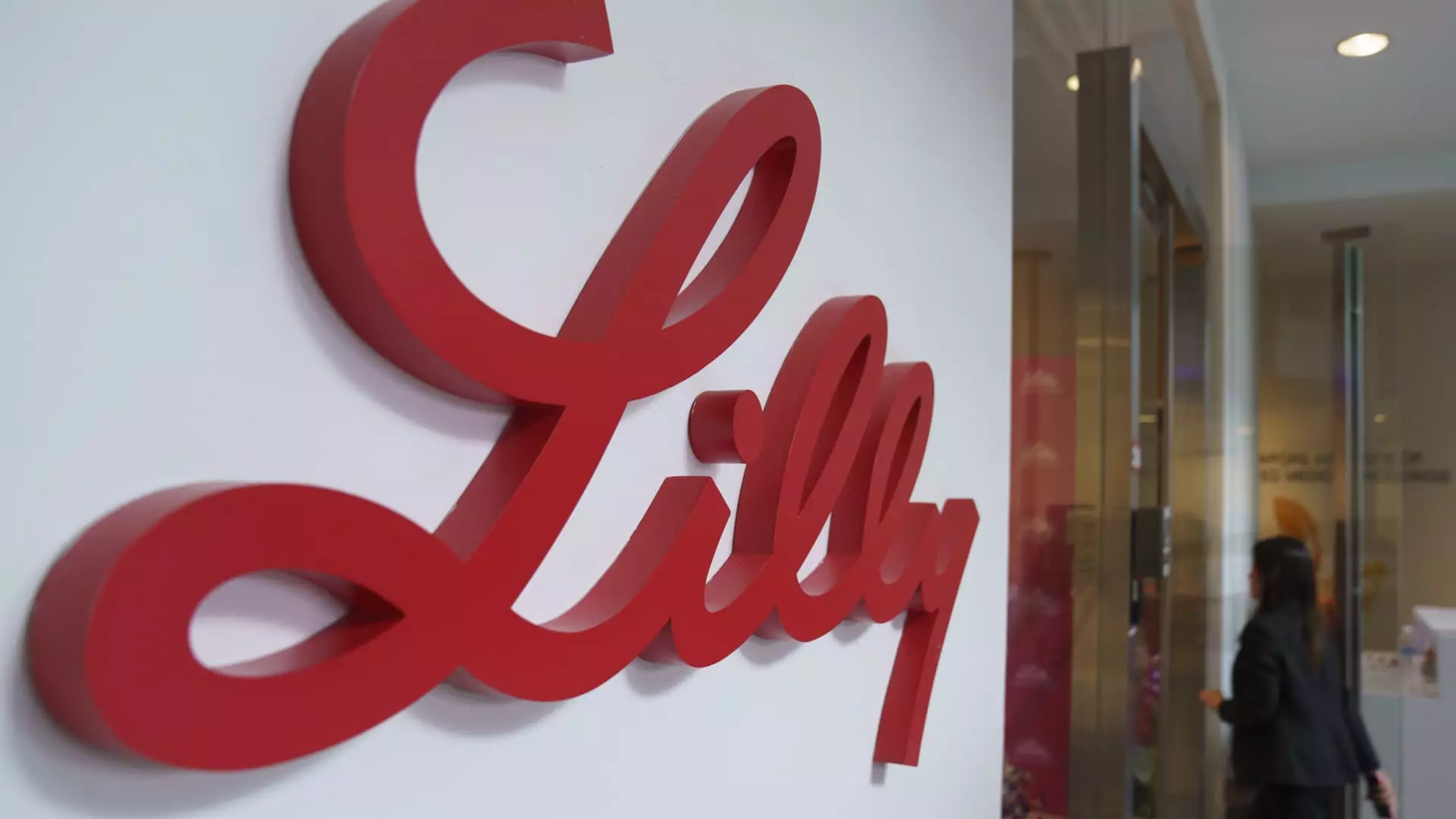In an era where weight loss and diabetes management appear to dominate the pharmaceutical landscape, Eli Lilly’s recent financial report indeed raises eyebrows. While the company basked in the glow of exceeding revenue estimates — pulling in $12.73 billion for the first quarter, boasting a staggering 45% growth from the preceding year — there’s an unsettling undercurrent to this success. The boost in demand for Eli Lilly’s weight loss drug, Zepbound, and diabetes treatment, Mounjaro, isn’t simply a result of unrelenting consumer need but rather a result of profit-driven strategies that often put economic incentives above patient welfare.
It’s critical to question the ethics behind these revenue figures. Why do we find ourselves in a healthcare ecosystem where profits dictate treatment availability and development, rather than actual human need? The data shows that, while Eli Lilly’s performances have outpaced analyst expectations, they’ve also lowered their profit guidance for the year due to substantial charges associated with the acquisition of an oral cancer drug from Scorpion Therapeutics. This brings us to a recurring theme in modern pharma: incredible revenue growth doesn’t always imply responsible fiscal navigation.
Tariffs and Their Tangible Aftermath: A Double-Edged Sword
In his remarks, CEO Dave Ricks stated that existing tariffs from the Trump administration are helping to rejuvenate U.S. manufacturing within the pharmaceutical sector. This perspective deserves serious critique. Tariffs traditionally aim to inspire domestic production and create jobs, but at what cost? While Ricks sees at least a temporary uptick in U.S. manufacturing, one must consider the broader implications of relying on tariffs to dictate business strategies. Are we prepared to accept potential increases in medication prices that come alongside tariff implementation?
Ricks voiced skepticism on whether tariffs are necessary in the long term, suggesting that economic incentives like lower corporate tax rates could better serve pharmaceutical companies seeking to invest stateside. This is a crucial debate, reflecting a central concern in contemporary liberalism: do we want to foster an environment where corporations operate on the principles of social responsibility, or continue accepting lower tax structures as merely a pathway to profits? If the ultimate goal is to ensure affordable healthcare, the conversation needs to evolve beyond simplistic trade-offs between tariffs and taxes.
The Unsung Heroes: Drugs That Save Lives and Fill Pockets
Many who turn to Mounjaro and Zepbound do so out of desperation fueled by debilitative health conditions. Eli Lilly’s impressive sale increases — $3.84 billion for Mounjaro (up 113% year-over-year) and $2.31 billion for Zepbound — douses the financial gains in a troubling light. Is this success indicative of a genuine public health achievement, or have we created a scenario where the need for profitable, high-cost treatments becomes a national standard in addressing chronic health issues?
What remains largely unexamined in this discussion is the ethical responsibility of pharmaceutical companies. Shouldn’t the exorbitant costs associated with these life-saving drugs raise alarms? The soaring profit margins suggest not just a thriving market but also increasing dependency on expensive medications, leading to serious ramifications for those who can’t afford them. An equitable healthcare system would prioritize access over bottom lines — a transition that seems painfully distant in a landscape dominated by profit-driven entities.
Pill-Pushing Economics: Supply vs. Demand Imbalance
Compounding authorities have acknowledged an over-saturation of demand for Eli Lilly’s drugs combined with supply shortages, prompting a frenzy that threatens medication accessibility. The FDA’s announcement declaring a shortage of tirzepatide, the active ingredient in these drugs, raises troubling questions: If Eli Lilly and competitors like Novo Nordisk are investing billions to secure their manufacturing footprints, why isn’t supply meeting the demand? Is this an issue of production capacity, or a deliberate limitation to create a sense of scarcity — and in turn, drive demand?
The answer is complex, yet insightful. Pharmaceutical companies often create a dual narrative: on one hand, they present themselves as benefactors of health through their groundbreaking medications; on the other hand, they operate within a framework where scarcity adds value, allowing them to hold the reins on pricing. This tactic raises ethical concerns. Is the medication game in which Eli Lilly engages simply a clever ruse to leverage high sales numbers at the expense of the very consumers who rely on these drugs for survival?
In a landscape rife with inflated costs, fairness in drug pricing needs to be re-established. Innovations that drive exorbitant profits shouldn’t eclipse the fundamental principle of health as a human right. The ongoing concern over whether financial gains can align with patient needs remains pertinent in our contemporary political discourse — a conversation that should be urging us towards a more equitable healthcare future.

